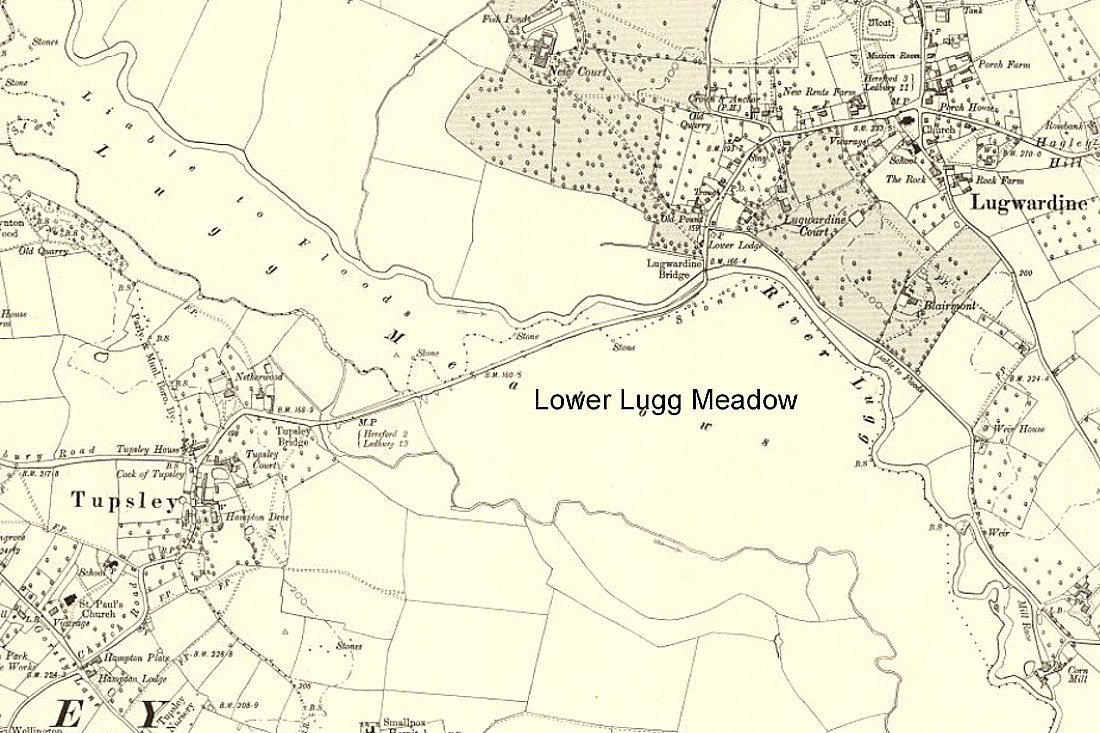Lower Lugg Flats
LOWER LUGG FLATS: Temporary Landing Ground (Aka LOWER LUGG MEADOW)
Operated by: Sir Alan Cobham’s UK Municipal Aerodrome Campaign
Location: S of the A438, about 2nm E to ENE of Hereford city centre
Period of operation: 12th September 1929
NOTES: This was the 78th venue for this Tour. Starting in May and ending in October one hundred and seven venues were planned to be visited. Mostly in England, two venues were in South Wales and eight in Scotland. Eventually, due to a couple of crashes and other setbacks, 96 venues were visited - still a magnificent achievement of course. Without any doubt this Tour helped to inspire the creation of several aerodromes/regional airports - but not in Hereford.
What I find very interesting is how the venues often jumped about over considerable distances. For example the next venue was BASINGSTOKE, then CHATHAM, followed by AYLESBURY and COLCHESTER. I wonder why this was? There are more extreme examples and presumably there must have been a reason?
After making these notes a fuller search revealed that the Lower Lugg Flats were situated in the sector from just E to the ENE of Hereford, following the Lugg river. What this does reveal though is that this site was on the other side of town to the KING’S ACRE/OLDFIELD locations.
The aircraft Cobham mostly used for this Tour was the ten-seater de Havilland DH.61 'Giant Moth' G-AAEV named 'Youth of Britain'. The punishing schedule he set himself seems astonishing today. Thoroughly recommended are his memoirs in 'A Time To Fly'.
A MICHAEL T HOLDER GALLERY
Note: The second item was published in the Gloucester Citizen on the 13th September 1929.
Note: The sixth item is from my Google Earth © derived database.
THREE YEARS LATER
By now Cobham was really getting into his stride to promote Aviation to the public, and launched his National Aviation Day / Display Tours. He wasn't the first by any means, but the sheer scale of his 1932 Tour is quite breathtaking with 174 venues visited. This was increased in 1933 to 267 venues divided into two Tours, 159 venues in 1934, and 214 venues in 1935.
If you are wondering how a field used for just a one day display can be considered as an aerodrome the answer is that every display site had to have Air Ministry approval and be licensed. In the early days a couple of Ministry men would arrive to survey the site. Even if approval was granted the men from the Ministry often imposed a variety of limitations on how the site and indeed the aircraft (or some at least) could be operated.
Later on in the 1930s it was decided that some of the ‘Flying Circus’ operators, (I am not certain it was all of them?), became self-regulating, but, as I understand the situation, each site still had to be approved and licensed. As an aside, as far as I am aware, this licensing system did not apply to Sir Alan Cobham's venues in 1929, but of course his visits were not a public air display as such.
As far as I am aware, Hereford was never visited again. Clearly a dead loss. But of course it does bring into question why Cobham and his team decided it had potential in 1929? I suppose it was mostly guesswork - it is after all a city. And this lesson appears to have been learnt by the other 'Flying Circus' operators with the exception of the 1936 British Empire Air Display, whose venue was Oldfield, Kings Acre, Hereford. See seperate listing under HEREFORD flying sites.
Terry Clark
This comment was written on: 2018-09-30 18:20:58When I was travelling to RAF Hereford in 1984 for ATC Summer Camp, there was some sort of 'fly-in' involving over a dozen light aircraft in the field just north east of your marker; maybe this was to commemorate Sir Alan Cobhams visit?
We'd love to hear from you, so please scroll down to leave a comment!
Leave a comment ...
Copyright (c) UK Airfield Guide





















